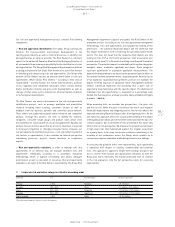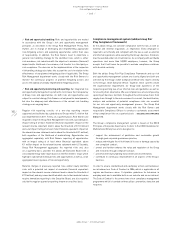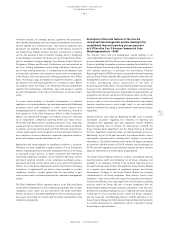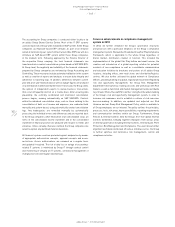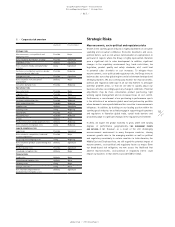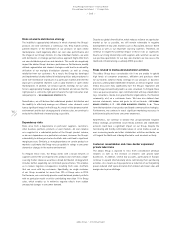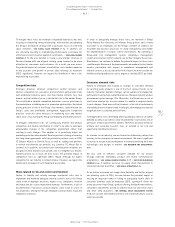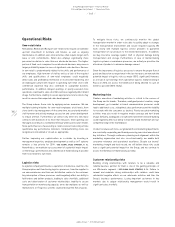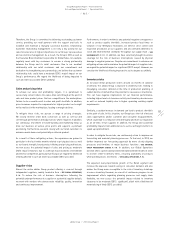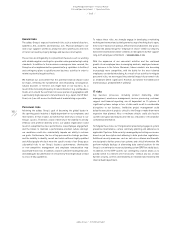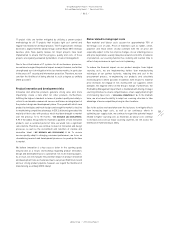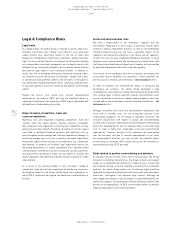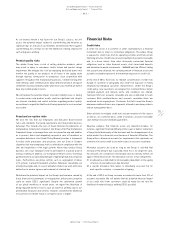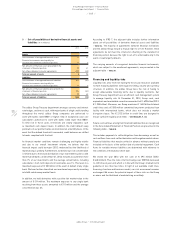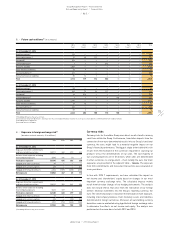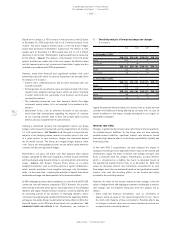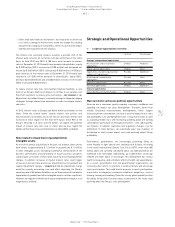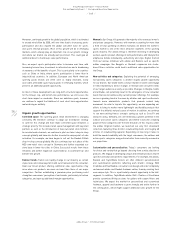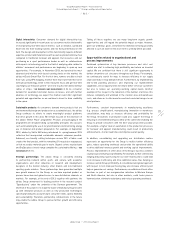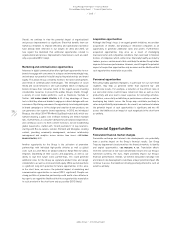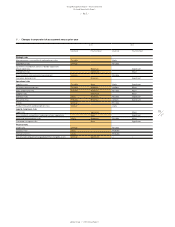Reebok 2013 Annual Report Download - page 173
Download and view the complete annual report
Please find page 173 of the 2013 Reebok annual report below. You can navigate through the pages in the report by either clicking on the pages listed below, or by using the keyword search tool below to find specific information within the annual report.
adidas Group
/
2013 Annual Report
Group Management Report – Financial Review
169
2013
/
03.5
/
Risk and Opportunity Report
/
Operational Risks
IT project risks are further mitigated by utilising a proven project
methodology for all IT projects that includes tight cost control and
regular risk reviews for all major projects. The IT organisation’s strategic
direction is aligned with the adidas Group’s overall Route 2015 strategic
business plan. New quality reviews for major projects have been
implemented to ensure that the progress, quality and costs of those
projects are regularly evaluated by members of senior management.
Due to the critical nature of IT systems for all our business processes,
we continue to regard the potential impact as major. However, we further
strengthened our risk mitigation in the last twelve months, in particular
in the areas of IT security and information protection. Therefore, we now
consider the likelihood of being affected to such a degree as unlikely
(2012: possible).
Product innovation and development risks
Innovative and attractive products generate strong sales and, more
importantly, create a halo effect for other products. Furthermore,
fulfilling the highest standards in terms of product quality and safety is
critical to sustainable commercial success and forms an integral part of
the product design and development phase. The speed with which new
product technologies and fresh designs are brought to market is decisive
for maintaining competitive advantage. In 2013, all brands generated the
majority of their sales with products which had been brought to market
over the previous 12 to 18 months
/
SEE RESEARCH AND DEVELOPMENT,
P. 99. If the adidas Group failed to maintain a pipeline of new innovative
products over a sustained period of time, we would risk a significant
sales decline. Therefore, we continue to invest in innovation and design
processes as well as the recruitment and retention of creative and
innovative talent
/
SEE RESEARCH AND DEVELOPMENT, P. 99. To ensure
we can quickly adapt to changing consumer preferences, we focus on
streamlining research and development processes to speed up the time
to market.
We believe innovation is a key success factor in the sporting goods
industry and, as a result, shortcomings regarding product innovation,
design and development pose a substantial risk to all industry players.
As a result, we still evaluate the potential impact of product innovation
and development risks as moderate. Due to our proven R&D track record
and our strong product pipeline, however, we regard the likelihood of
materialising as unlikely (2012: likely).
Risks related to rising input costs
Raw material and labour costs account for approximately 70% of
the Group’s cost of sales. Prices of materials such as rubber, cotton,
polyester and those which closely correlate with the oil price are
especially subject to the risk of price changes. As our ordering process
and price negotiations usually take place around six months in advance
of production, our sourcing function has visibility and reaction time to
reflect sharp increases in input costs in its planning.
To reduce the financial impact on our product margins from higher
sourcing costs, we are implementing further lean manufacturing
techniques at our partner factories, reducing time and cost in the
procurement process, re-engineering our products and selectively
increasing prices where possible. In addition, with respect to material
price increases we engage in risk sharing with our suppliers, which
dampens the negative effect on the Group’s margin. Furthermore, the
Profitability Management department is mandated with driving strategic
sourcing initiatives to ensure competitiveness of our supply chain in light
of increasing input costs
/
SEE GLOBAL OPERATIONS, P. 94. In the medium
term, we also have the ability to adapt our sourcing structure to take
advantage of more competitive pricing in other locations.
Due to the actions we have taken over the last years to mitigate effects
from increasing input costs, as well as our continuous efforts in
optimising our supply chain, we continue to regard the potential impact
related to higher sourcing costs as moderate. As labour costs continue
to increase across all our major sourcing countries, we still assess the
likelihood of materialising as likely.


